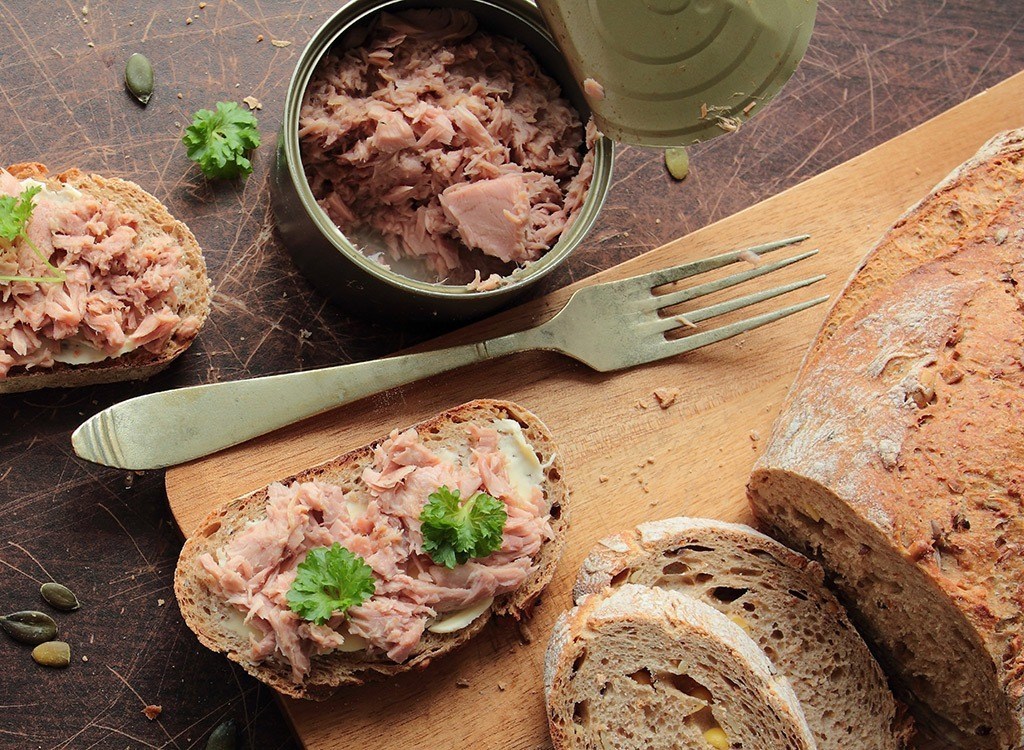It's shelf stable, affordable, and can be used in a variety of meals, from salads to sandwiches…
In terms of nutritional benefits, canned tuna has a lot to offer, although it is important not to overdo it. Overall, incorporating canned tuna into your diet can be a great addition because of all the positive effects it can have on your body.
So if you enjoy a traditional tuna melt every day, or like to add tuna to your salads, here are some things you should know about what happens to your body when you eat canned tuna, according to Eat This, Not That!
1. You will increase your protein intake
 Eat canned tuna with bread Shutterstock |
Adding protein to your diet can be extremely valuable because it will make you feel fuller for longer and ultimately consume fewer calories. Canned tuna does just that.
According to the United States Department of Agriculture (USDA), a can of tuna in oil contains 46.6 grams of protein, while a can of tuna in water contains 31.7 grams of protein. Given that you should consume 0.36 grams of protein per pound of body weight, just one can of tuna will satisfy almost all of your daily needs.
2. Supports brain and eye health
Thanks to the omega-3 fatty acids found in canned tuna, you'll boost your brain and eye function just by eating that tuna sandwich for lunch. DHA, an omega-3 fatty acid, is known to have memory-enhancing properties.
Plus, it reduces inflammation and relieves symptoms of dry eye. So if you were looking for a reason to start buying canned tuna, now you have two.
3. Canned tuna in oil can cause weight gain
Although canned tuna in oil has some benefits such as having more protein and flavor than canned tuna in water, canned tuna in oil is higher in calories, fat and can lead to weight gain.
Consider the numbers: Canned tuna in oil contains 56 calories per ounce and 2 grams of fat, while tuna in water contains less than half the calories at 24 calories per ounce and less than 1 gram of fat. You can opt for tuna in water if you want to consume fewer calories and fat.
4. May feel bloated
One ingredient found in all canned tuna is sodium, which in large amounts can lead to bloating.
According to the Linus Pauling Institute, a can of tuna—whether packed in oil or in water—contains about a quarter of your daily sodium intake. While sodium is essential for regulating fluids in the body, eating too much can lead to bloating.
Therefore, it is important to be aware of how much canned tuna you eat each day to stay within your sodium limits.
Don't eat too much canned tuna.
That said, canned tuna has significantly less mercury than fresh tuna, which means you can eat it more often. When you see a can of tuna labeled “light tuna,” it means it has less mercury than albacore tuna.
According to Livestrong , adults can eat "light tuna" once a week without any problems. So stick to the idea of eating everything in moderation, and don't eat too much canned tuna to avoid mercury poisoning, according to Eat This, Not That!
Source: https://thanhnien.vn/dieu-gi-xay-ra-khi-ban-an-ca-ngu-dong-hop-1851028470.htm



























![[Photo] Gia Lai provincial leaders offer flowers at Uncle Ho's Monument with the ethnic groups of the Central Highlands](https://vphoto.vietnam.vn/thumb/1200x675/vietnam/resource/IMAGE/2025/7/9/196438801da24b3cb6158d0501984818)








































































Comment (0)